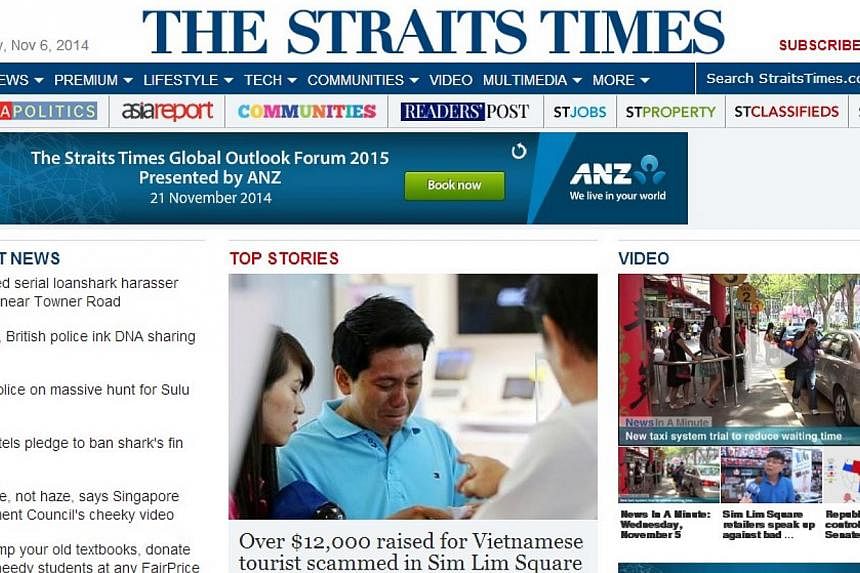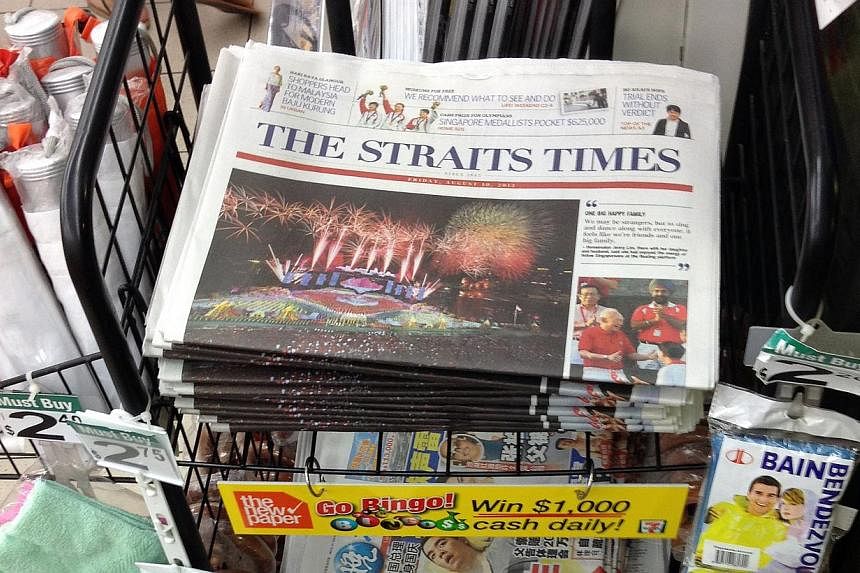SINGAPORE - The Straits Times remains the most-read English newspaper, with readership from print and digital editions reaching about a third (32 per cent) of the population.
The print version of the title is read by 27 per cent of the adult population, while the digital edition registers an average daily readership of 10 per cent.
Published by media group Singapore Press Holdings (SPH), The Straits Times is primarily read by higher-income groups, with seven in 10 (71 per cent) readers coming from homes with a monthly household income of $5,000 and above.
Close to half (47 per cent) of the paper's readers are PMEBs, or professionals, managers, executives and businessmen, according to this year's Nielsen Media Index Report.
The New Paper (TNP), another SPH English publication, maintains its combined average daily readership at 9 per cent, with the hardcopy read by 8 per cent and its digital version reaching 1 per cent.
TNP continues to be the local paper with the highest proportion of its readers aged 15 to 29 (30 per cent).
SPH's other English title, The Business Times (BT), maintains its print and digital readership at 2 per cent. The paper's hardcopy readership is maintained at 2 per cent and its digital version reaches 1 per cent of the population.
PMEBs form the majority of the paper's readership base, comprising 79 per cent of its aggregate readers. More than nine in 10 BT readers have a monthly household income in excess of $5,000.
MediaCorp's freesheet Today has a print readership of 12 per cent and a digital readership of 2 per cent.
The Nielsen Media Index Report also found that seven in 10 people who read digital editions of newspapers do so on their mobile devices. Most of these readers are aged under 45, and represent about 16 per cent of the overall population.
In general, 15 per cent of people here read digital papers on a daily basis, the report said. But print newspapers remain a staple, with six in 10 choosing to read them daily.
"Newspapers are embracing the opportunity to connect with their readers, and with the availability of apps from many major Singapore newspaper titles... mobile readership continues to grow," said Ms Rebecca Tan, managing director of Nielsen's Media business in Singapore and Malaysia.
"Along with increasing connected device ownership and time spent online, consumers' media consumption habits are shifting beyond traditional media formats," she added.
"As a result, it is becoming increasingly important for media owners to understand when, where and how consumers are accessing media content in order to uncover new opportunities to engage and connect with consumers."
Among the Chinese dailies, SPH's Lianhe Zaobao is most popular, with an aggregated daily readership of 12 per cent. The media company's evening papers Shin Min Daily and Lianhe Wanbao accounted for 11 and 9 per cent of the population, respectively.



